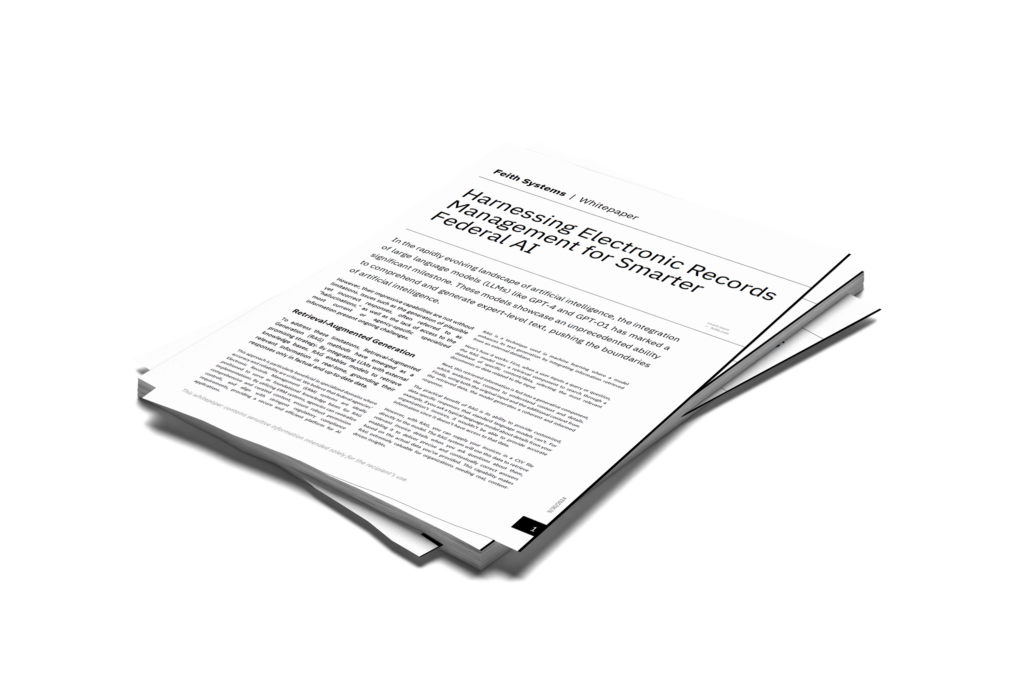# Whitepapers # AI
Harnessing Electronic Records Management For Smarter Federal AI
Learn how federal agencies can integrate Electronic Records Management (ERM) systems to improve the accuracy and reliability of AI models.

As federal agencies explore the possibilities of AI, challenges like unreliable or outdated responses continue to limit the effectiveness of large language models (LLMs). These systems, while powerful, struggle with generating precise answers when they lack access to real-time, agency-specific information.
Our white paper, Harnessing Electronic Records Management for Smarter Federal AI, presents a solution: integrating AI with your agency’s existing Electronic Records Management system. This approach enables AI to pull from a centralized, secure repository of accurate, up-to-date records, delivering more reliable insights tailored to your agency’s unique needs.
What's Inside the White Paper
- The Limitations of Current AI Models: Why LLMs like GPT-4 generate incorrect or outdated information, and how this impacts decision-making in federal environments.
- How Retrieval-Augmented Generation (RAG) Works: A detailed breakdown of RAG methods, which allow AI to retrieve real-time data from an external knowledge base, improving the accuracy and relevance of responses.
- The Role of ERM Systems in AI: How federal agencies can use their Electronic Records Management systems as a foundational knowledge base for RAG, centralizing records to ensure data integrity and compliance.
- Security and Compliance: Addressing concerns around the integration of AI with federal records, including the role of Feith’s RMA iQ platform in securing sensitive data, maintaining compliance with FISMA, and ensuring data privacy with Role-Based Access Control (RBAC) and Multi-Factor Authentication (MFA).
- Data Quality and Governance: How ERM systems like RMA iQ improve AI output by providing clean, validated records, reducing the noise from irrelevant or incorrect data.
- Scalability and Cost Efficiency: How Feith’s RMA iQ can handle large-scale federal records management while reducing costs by leveraging existing infrastructure and improving resource efficiency.
This white paper provides a practical guide for federal agencies seeking to enhance their AI capabilities while maintaining data security, compliance, and efficiency.
